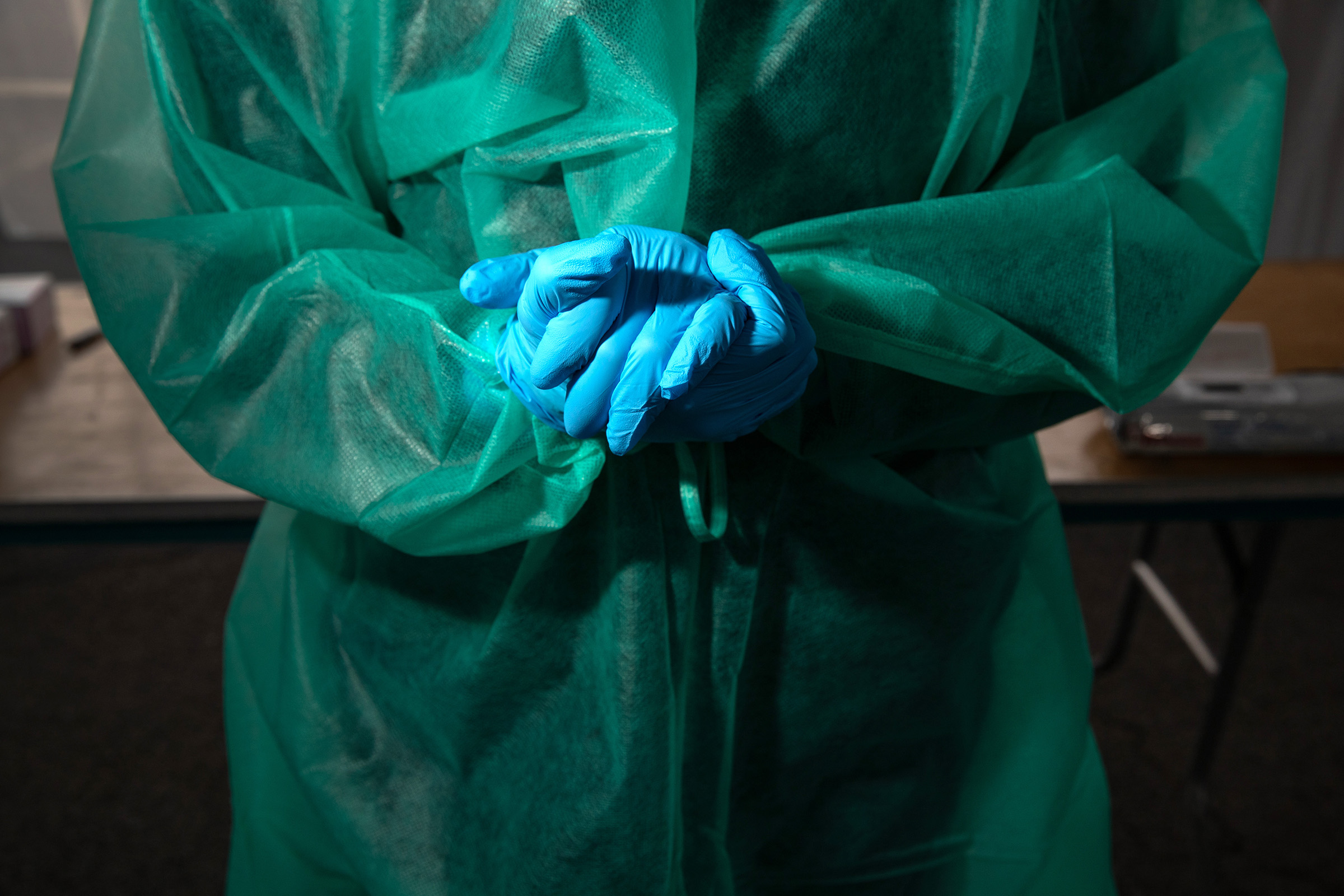
I watched the cardiac monitor of a patient who had a “Do Not Resuscitate” order transform from a sinusoidal rhythm – seen when patients have very high levels of potassium that the kidneys are not working well enough to clear – to asystole, better known as a flat line. The patient was COVID-19 positive, like most, of the patients in the hospital in New York City at the end of March. He presented to the emergency department days earlier with respiratory distress and had required a breathing tube and ventilator support. At that time, he did not have a “Do Not Resuscitate” order, but was rather “Full Code,” indicating that we should do anything in our power to prolong his life. While in the ICU, his condition worsened, leading to kidney failure that dialysis could not fix. We had had a difficult discussion with the family a day earlier regarding his poor prognosis and they decided not to prolong his suffering and not to escalate care, meaning we would keep everything as it was and make him comfortable, but would not do chest compressions if he lost his pulse.
I called to deliver the bad news that the patient, their father, had died. As medical students we are trained on how to do this, but that never seems to make it any easier. His daughter started wailing a cry I now know after my year and a half as a doctor is distinct from any cry I had ever heard. It is the cry reserved only for a family member when you tell them their loved one has died. A cry so deep that you cannot escape the full sensation behind your eyes and tightening of your throat, no matter how many times you hear it. A cry that amplified when I had to reiterate that she was not allowed to see her father due to hospital policy, a policy I understand in theory, but one that is hard to imagine I would comply with had it been my own father.
I got off the phone and placed the “discharge as deceased” order to notify our admitting department of the death and to start the process of taking the body to the morgue. The clerk came up to the resident room to have me fill out the death certificate and I asked him how many he had done today.
“This is the eighth one.”
I looked at him, trying to make a connection through our masked faces, and offered him a donut that had been donated earlier in the day. He obliged and left to communicate to the transport team to expedite the movement of the body to the morgue. Turning over the room was crucial – we had 11 patients in the emergency department that day on ventilators who needed ICU beds.
I took a moment to collect myself, ate another donut, and placed my second difficult phone call of the night to the family of another patient suffering from COVID-19, a sixty-year-old female who was not progressing as we hoped. We hope a lot these days, which as doctors is not what we are used to doing. We are used to practicing medicine based on evidence, based on research that has been peer-reviewed and repeated. We are used to following procedures and practices that have been vetted by our colleagues and honed across thousands of patients. But in the face of a new disease, one that we still know little about, what we have now is hope. Hope that the research studies that have been done on certain treatments will work, because the trajectory of this patient is not unlike many before her and not unlike it will be for many after.
I called the patient’s husband and asked him in Spanish if he preferred to speak in Spanish. He let out a sigh of relief and immediately put me on speakerphone with his two daughters. I explained to them the events of that day – that his wife and their mother was now requiring higher doses of medication to support her blood pressure – that her situation was critical. Her daughter asked me if there was any way she could speak to her mother or have her hear her voice. I explained to her that unfortunately the hospital did not have the technology to do that at the moment. What I didn’t say was that I wanted so badly to give her my cell phone number and put it on speakerphone for the patient, but I knew that for my own safety and the risk of transmission, it was not a good idea to bring my cell phone into the room. I told her to tell me what she wanted me to tell her mom and that I would tell her the next time I was in the room.
“Tell her we love her, that we know she is strong, and that we are waiting with open arms for her.”
“Ok, I’ll tell her,” I croaked out, feeling that familiar sensation of throat tightness. Her husband heard my voice change and in that moment of him feeling what I’m sure was an overwhelming amount of sadness for his wife, thanked me for taking care of her and told me to take care of myself.
And that’s when I broke.
More Must-Reads from TIME
- Why Trump’s Message Worked on Latino Men
- What Trump’s Win Could Mean for Housing
- The 100 Must-Read Books of 2024
- Sleep Doctors Share the 1 Tip That’s Changed Their Lives
- Column: Let’s Bring Back Romance
- What It’s Like to Have Long COVID As a Kid
- FX’s Say Nothing Is the Must-Watch Political Thriller of 2024
- Merle Bombardieri Is Helping People Make the Baby Decision
Contact us at letters@time.com